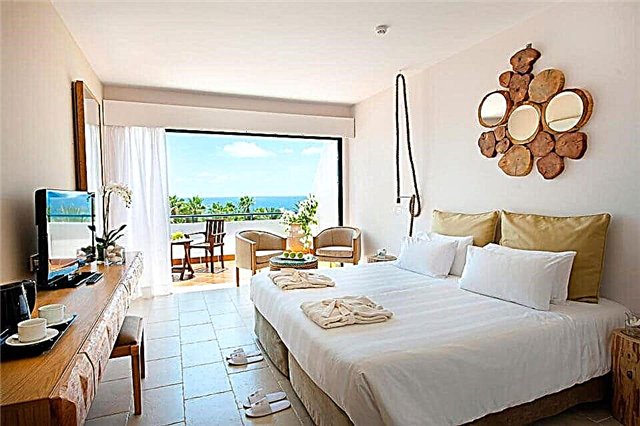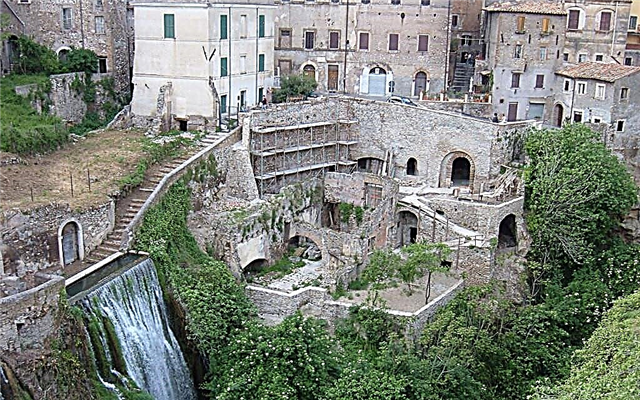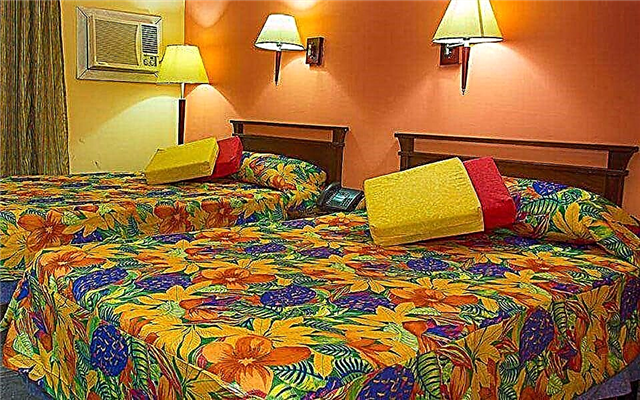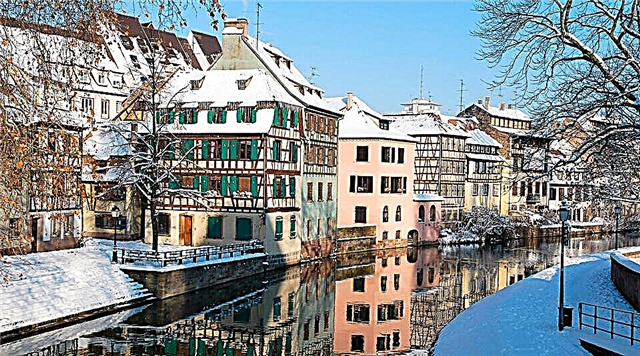Location: Republic of Palau
Dimensions: 460 x 160 m
Maximum depth: 50 m
Coordinates: 7 ° 09'40.7 "N 134 ° 22'33.2" E
Content:
A small oblong lake in the Pacific archipelago belonging to the Republic of Palau, is one of the most visited lakes in the world. It is famous for the fact that about two million jellyfish live here. Travelers from different countries try to come to Palau to swim in a large cluster of jellyfish, without fear of getting "burned".

Features of the lake
The greenish lake is small in size. It has a length of 460 m, a width of 160 m and covers an area of slightly less than 6 hectares. From the ocean shore the reservoir is separated by a strip of land two hundred meters wide.
The lake appeared 10-12 thousand years ago, after two tectonic plates collided, and a depression was formed. Through the holes in the rock, salty ocean water began to seep into it, and together with the water, jellyfish appeared in the new reservoir. However, the passages through which the water flowed were small, and larger predatory fish did not get into the isolated lake.
The reservoir has a depth of up to 50 m. It is filled with water, the salinity of which is 28 - 32 ‰. The water in the lake is divided into two levels. In the upper layer, where there is a lot of oxygen, all its inhabitants live. Through three tunnels that connect the reservoir with the oceans, fresh water constantly flows into it during high tides.

The bottom layer starts at a depth of 15 m and reaches the very bottom. A large amount of ammonia, phosphates and hydrogen sulfide are dissolved here. There is practically no oxygen at the bottom, so the lower part of the lake is unsuitable for life. Curiously, both layers of water are isolated from each other and never mix.
What jellyfish live in the lake
In the open ocean and seas, jellyfish feed on tuna, sea turtles, moonfish, salmon and some birds. The body of jellyfish is almost entirely water, and they do not have any special nutritional value. Animals eat jellyfish only when they lack other food. In a closed lake in Palau, jellyfish do not have natural enemies, so they actively reproduce.
In an unusual reservoir there are two types of jellyfish - eared (Aureliaaurita) and golden (Mastigiaspapua). Interestingly, the population of eared jellyfish, which is also called ordinary or lunar, is huge. They are found all over the planet, and there are especially many eared jellyfish in the waters of the temperate and tropical zones, in the Black and Mediterranean Seas. This type of jellyfish has spread widely around the world, as it is able to withstand significant fluctuations in temperature and salinity.

Why are the local jellyfish safe?
Almost all jellyfish living on Earth are dangerous to people. Their stinging cells cause inflammation on the skin, similar to nettle burns, and the bites of some species are even fatal.
Lake Medusa in Palau is the only place in the world where tourists can safely swim surrounded by a large cluster of jellyfish and not be afraid for their own health. This became possible because the local jellyfish lived in an autonomous environment for a long time, and their biology has changed a lot.
Regular jellyfish are not vegetarians. With their mobile tentacles, they grab plankton, crustaceans, insect larvae and small fry. There is very little animal food in Lake Medusa, and in order not to starve to death, the jellyfish cut off from the World Ocean had to reorganize to a different type of diet and start leading a vegetarian life. In the process of evolution, the stinging cells covering their tentacles have died out. Therefore, those who swim in the lake swim calmly - they are not threatened with "burns".

Both types of jellyfish have learned to coexist with symbiotic algae - zooxanthellae, thanks to which they obtain a significant part of the essential nutrients. Seaweed also does not remain at a loss. They inhabit the translucent tissues of jellyfish and exist due to their metabolism.
Jellyfish migrations
Each of the species living in the lake has its own strategy of movement through the reservoir. Golden jellyfish make rhythmic horizontal and vertical movements. Mass migrations of hundreds of thousands of individuals occur strictly at a certain time, and the "dance" of a huge number of jellyfish does not leave any tourist indifferent!
In the dark and until 14 o'clock in the afternoon, golden jellyfish, like floats, move vertically along the surface of the water. Rising and falling, they absorb useful substances from the lake. When the sun's rays begin to illuminate the reservoir, these jellyfish begin a plan of horizontal migration. Until 15.30, they swim from the eastern part of the reservoir to the western one, and then return to the place of their overnight stay.

Swimming near the surface of the water, golden jellyfish rotate counterclockwise. Such movements allow them to achieve uniform illumination of all parts of the body, and the algae living on them receive all the necessary conditions for photosynthesis.
Eared jellyfish behave differently. At night, they float closer to the surface to catch prey. These jellyfish feed mainly on copepods, which prefer to swim in the upper water level at night.
Swimming with jellyfish
On the island, where the unique lake is located, there are a dozen more smaller bodies of water inhabited by jellyfish. However, snorkeling for tourists is only allowed in Lake Medusa. Swimming in this body of water requires divers to comply with certain safety precautions. All travelers must be warned that at a depth of over 15 m, many microelements harmful to humans are dissolved in water. Poisoning through open skin areas occurs very quickly and can cause severe intoxication of the body, therefore diving is prohibited here.

Also, scuba diving is not allowed in Lake Medusa. Air bubbles that form during the scuba diver's breathing fall under the dome of the jellyfish and can lead to its death. For these reasons, in the lake they swim only in the upper layer of water, using fins and a mask. For those travelers who cannot swim, guides take them around the lake on foam mats, so they too have the opportunity to look at the jellyfish cluster from an arm's length.
A convenient wooden pier has been built for divers near Lake Medusa. Here they change, rest and leave their belongings before diving.
With a massive accumulation of jellyfish, it is impossible to avoid contact with them. However, all travelers who have visited the lake note that contact with animals does not leave unpleasant impressions. On the contrary, during a meeting with soft and translucent bodies, all bathers receive only positive emotions.

Travel Tips
- For a permit to visit a natural attraction or a permit, you need to pay about $ 100.
- An hour is enough for swimming among the jellyfish.
- Least of all people are near the lake in the afternoon.
- Travelers who come here are forbidden to use sunscreens, because they pollute the natural reservoir and can damage the jellyfish living there. To avoid sunburn, wear long sleeves or wear neoprene suits for swimming.
- The weather on the island is hot, so a supply of drinking water will be useful.
- Tourist boats moor to the other side of the island. From here to the lake you need to make a short path through the jungle. It takes about three minutes a steep ascent and the same amount of time to descend to the reservoir along the trail. It should be borne in mind that the rocky trail becomes slippery after rain, so travelers are advised to put on sturdy, comfortable shoes and be careful not to slip or fall.
- The water in the lake is cloudy, and the visibility is only 5 m.
- The most spectacular pictures of jellyfish are obtained in sunny weather.

How to get there
From Russia to the Republic of Palau they get through Japan, the Philippines, South Korea, Taiwan or Guam. Lake Medusa is located in the middle of the Palau archipelago. It stretches to the east of the uninhabited coral island of Eil Malk.
A journey to a unique body of water is included in many of the Palau Islands tours. You can buy such an excursion at any travel agency in the largest city of Palau - Koror. If desired, here it is not difficult to hire a boat to Eil Max. The road to the island takes 40-45 minutes.











